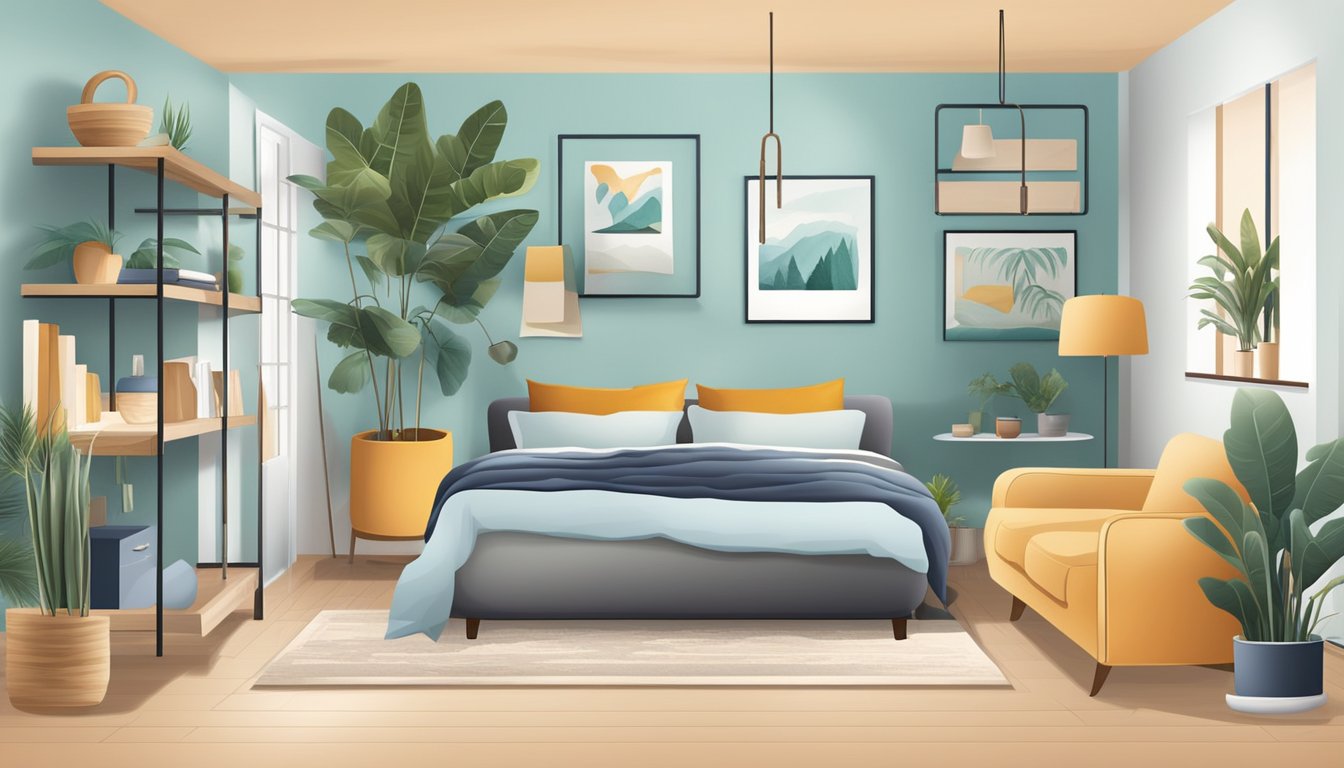Let’s be honest. The word “sustainable” can feel a bit…exhausting. It’s a term we hear everywhere, from our coffee cups to our cars. But in the world of interior design, it’s not just a buzzword. It’s a full-blown revolution in how we think about our homes. It’s about moving away from the disposable, fast-furniture culture and toward spaces that tell a story, that feel good to live in, and that are, well, kinder to the planet.
And here’s the deal: this isn’t about sacrificing style for a clear conscience. In fact, it’s the opposite. The most forward-thinking, beautiful interiors today are built on a foundation of reclaimed wood, recycled metal, and innovative new materials made from the unexpected. This is where modern design is truly heading.
Why Now? The Push Towards Conscious Design
So why is this happening now? Well, it’s a perfect storm of awareness and desire. We’re more connected than ever to the environmental impact of our choices. We see the headlines about landfill waste and carbon footprints. And simultaneously, there’s a growing hunger for authenticity. In a world of mass-produced sameness, we crave things with a past, with texture, with a soul. A coffee table made from salvaged barn wood has a history a flat-pack particleboard version simply can’t replicate.
The Material World: What’s Actually Out There
Alright, let’s dive into the good stuff—the materials themselves. This is where it gets exciting.
Reclaimed Wood: The Undisputed Star
This is the classic for a reason. Sourced from old barns, decommissioned factories, retired shipping pallets, and even fallen trees, reclaimed wood is the backbone of sustainable design. Each plank is unique, bearing the marks of its previous life—nail holes, saw marks, and a patina that can’t be faked. You’re not just getting a floor or a feature wall; you’re getting a piece of history.
Use it for: Wide-plank flooring, dramatic statement walls, robust dining tables, and open shelving. It adds instant warmth and character to any room.
Recycled Metal: Industrial Cool
Think cold, hard, and impersonal? Think again. Recycled steel, aluminum, and copper are being transformed into everything from sleek kitchen countertops to elegant light fixtures. Using recycled metal consumes a fraction of the energy needed to produce new metal. And the aesthetic? It’s that perfect blend of industrial edge and refined modernity.
Use it for: Light fixtures, cabinet pulls, table bases, and even sinks. A pendant light made from repurposed industrial parts becomes an instant conversation starter.
Recycled Glass & Concrete: Surprisingly Sustainable
These two might surprise you. Recycled glass is crushed and transformed into stunning countertops and tiles (often called terrazzo), offering a kaleidoscope of color and texture. And concrete? Well, modern mixes often incorporate industrial byproducts like fly ash, reducing its carbon footprint significantly. It’s not just for brutalist buildings anymore; it’s for chic, minimalist kitchen islands and sleek fireplace surrounds.
The Innovators: Beyond the Basics
This is where things get really cool. Designers and scientists are collaborating to create materials from what we’d normally throw away.
- Piñatex: A leather alternative made from cellulose fibers extracted from pineapple leaves. It’s being used for gorgeous, durable upholstery.
- Mycelium: The root structure of mushrooms. It can be grown into custom shapes to create packaging, lampshades, and even acoustic panels that are 100% compostable.
- Recycled Plastic Textiles: Those plastic bottles are getting a second life as soft, durable rugs and outdoor furniture fabric. It’s a brilliant closed-loop system.
How to Weave It Into Your Home (Without It Feeling Like a Lecture)
Okay, so you’re sold on the idea. But how do you actually incorporate sustainable interior design without making your home look like a recycling center? The key is balance and intention.
Start with a Statement Piece
You don’t need to overhaul everything. Begin with one focal point. A massive dining table made from a single slab of reclaimed timber. A vibrant rug woven from recycled fishing nets. One bold piece sets the tone and does most of the talking for you.
Mix and Match Eras and Textures
The beauty of this style is its eclectic nature. Pair a sleek, modern sofa with a vintage, recycled metal coffee table. Place a soft, recycled plastic rug under your reclaimed wood dining set. The contrast between old and new, rough and smooth, is what creates a dynamic and deeply personal space.
Think Beyond the Big Stuff
Sustainability is in the details, too. Choose zero-VOC paints for better indoor air quality. Look for cushions stuffed with recycled plastic filling. Opt for accessories made by local artisans using local materials—this reduces transportation emissions and supports your community. Every small choice adds up.
The Real Benefits: More Than Just a Good Feeling
Sure, helping the planet feels great. But the advantages of using recycled home decor and sustainable materials go much deeper.
- Unmatched Character: These materials come with a built-in narrative. They’re inherently unique, making your home one-of-a-kind.
- Durability: Often, reclaimed wood or metal has already stood the test of time. It’s been seasoned and stabilized, meaning it’s less likely to warp or crack than some new materials.
- Healthier Indoors: Many sustainable materials are low-toxicity, avoiding the off-gassing of chemicals found in some pressed woods and synthetic fabrics.
That said, it’s not always a perfectly straight path. Sourcing truly sustainable materials can take more effort. You might have to seek out specialty suppliers or wait for a craftsman to create your piece. But the result—a home that is truly, authentically yours—is worth the hunt.
The Future is Circular
The trend towards eco-friendly home materials isn’t a passing fad; it’s the foundation of a circular economy. It’s a shift in mindset from “cradle to grave” to “cradle to cradle,” where materials are valued, reused, and reimagined indefinitely. Our homes are becoming living ecosystems, reflecting a deeper understanding of our place in the world.
It asks a simple but profound question: Isn’t a home that’s good for the world also, ultimately, better for us?

